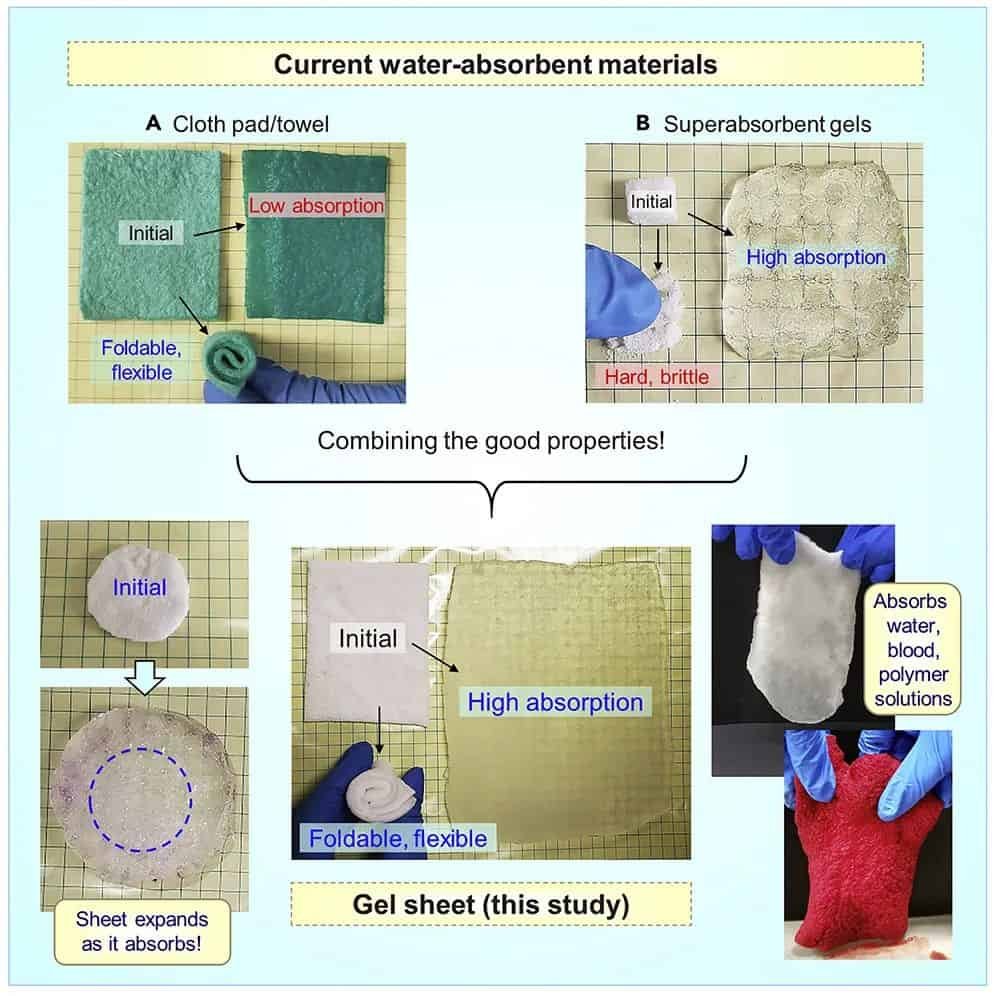
There are two types of materials that can typically absorb liquids – porous materials and hydrogels.
Porous materials like cloth and paper are flexible, foldable, and while easy to use, not very absorbent.
On the other hand, highly absorbent hydrogels made up of polymers (macromolecular networks) can absorb more than 100 times their own weight in water.
However, when dried, these hydrogels become friable solids.
Recently, in an article published in Matter, researchers have developed a “better adsorbent”.
This absorbent, foldable, cuttable hydrogel can absorb and hold more than three times the amount of water-based liquid than ordinary paper towels.
The researchers mixed acids, bases and the other components of the hydrogel in a bag with a zipper.
Like vinegar meets baking soda, this mixture released carbon dioxide bubbles in the gel, creating a porous, foam-like material.
Next, the researchers sandwiched this zippered bag between glass plates to form a thin sheet.
Then it was exposed to UV light, whereupon the liquid condensed around the bubbles, leaving pores.
Finally, the team immersed the fixed sheet in alcohol and glycerol and then air-dried it.
This allowed the dried gel sheets to remain soft and flexible as well, having a fabric-like texture.
The gel sheets also performed well in viscous liquids, such as syrup, blood, and even liquids a million times more concentrated than water.
Researchers found that the gel sheet could absorb nearly 40 milliliters of blood in 60 seconds, while the gauze dressing absorbed only 55 percent.
The gel sheets also held absorbed blood well, while soaked gauze dripped blood.
Compared to tampons, sponges and gauze, gel sheets absorb more than twice the amount of blood as other materials.
Because of their flexibility and absorbency, gel sheets also have the potential to be used as dressings to stop serious wound bleeding.
In tests, the gel sheets remained soft and flexible with good stability in the environment for one year.
Next, the team plans to optimize the gel sheets by increasing absorbency, strengthening the material, reducing costs and making them reusable.
The researchers are also looking for a gel sheet that can absorb oil.
